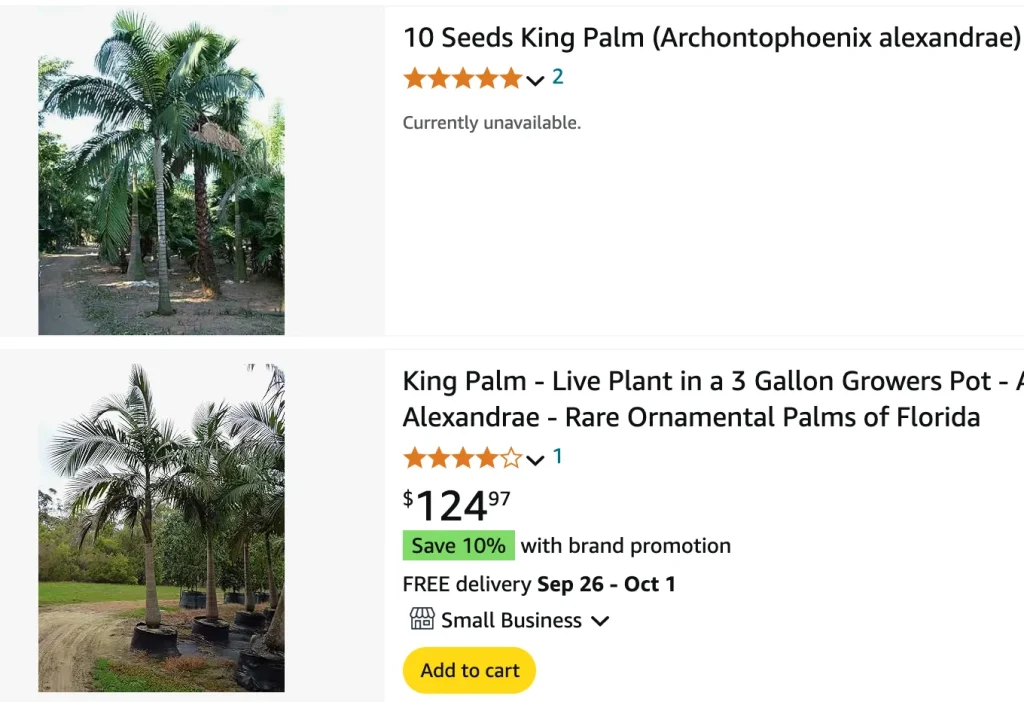
FAQs About Archontophoenix Alexandrae
As a passionate plant enthusiast, I’ve spent a lot of time getting to know Archontophoenix Alexandrae, commonly known as the Alexandra Palm, belong to the Arecaceae family. This stunning palm tree brings a tropical feel to any garden or indoor space. In this article, I’ll address some frequently asked questions to help you understand how to care for this beautiful plant and share my personal experiences along the way.
Plant Family: 184 Genera in Arecaceae
How Fast Does Archontophoenix Alexandrae Grow?
One of the most common questions I hear is, “How fast does Archontophoenix Alexandrae grow?” In my experience, this palm is relatively fast-growing, particularly in optimal conditions. Under the right circumstances, it can grow about 2 to 3 feet per year. Factors like sunlight, soil quality, and watering frequency can all impact its growth rate. When planted in rich, well-draining soil and provided with plenty of indirect sunlight, I’ve seen mine thrive and reach impressive heights.
What Are the Ideal Growing Conditions?
To ensure your Alexandra Palm flourishes, consider its ideal growing conditions. This palm prefers warm, humid environments, making it perfect for USDA zones 10 to 11. I’ve noticed that it does best in partial shade, especially during the hottest part of the day. Regular watering is essential; the soil should be kept moist but not soggy. I usually water mine every week, allowing the top inch of soil to dry out between waterings.
How to Care for Archontophoenix Alexandrae?
Caring for Archontophoenix Alexandrae involves a few key practices. Regular fertilization is crucial during the growing season. I use a balanced, slow-release fertilizer every couple of months to keep the nutrients flowing. Pruning dead fronds is also essential to maintain its appearance and health. I recommend pruning in late spring to avoid any damage to the new growth.
How to Propagate Archontophoenix Alexandrae?
If you’re interested in propagation, you’ll be glad to know that Archontophoenix Alexandrae can be propagated from seeds. I’ve had success with this method. Here’s how I do it:
- Collect Seeds: Harvest fresh seeds from a mature palm.
- Soak Seeds: Soak them in water for 24 hours to soften the seed coat.
- Plant: Plant the seeds in a well-draining potting mix and keep the soil consistently moist.
- Provide Warmth: Place the pot in a warm location; germination can take several weeks.
What to Plant With Archontophoenix Alexandrae?
When considering companion plants, look for species that thrive in similar conditions. I often pair my Alexandra Palm with ferns and other tropical plants like Philodendron or Monstera. These plants not only complement the palm’s aesthetic but also create a lush, tropical feel in my garden.
Can You Grow Archontophoenix Alexandrae Indoors?
Yes, you can grow Archontophoenix Alexandrae indoors, provided you have enough light. In my experience, it does best near a large window with filtered sunlight. Make sure to rotate the plant occasionally to promote even growth. I also recommend using a humidity tray to maintain the moisture levels around the palm, especially in drier climates.
Is Archontophoenix Alexandrae Toxic?
Another common question I encounter is whether Archontophoenix Alexandrae is toxic. Thankfully, this palm is non-toxic to both pets and humans, which makes it a safe choice for households with children and animals. I appreciate this feature, especially since I have pets that love to explore the garden.
What Are the Benefits of Growing Archontophoenix Alexandrae?
The benefits of growing Archontophoenix Alexandrae are numerous. Beyond its striking appearance, it can help purify the air and add a tropical flair to any setting. It’s also relatively low-maintenance once established, which is a huge plus for busy plant lovers like me. Additionally, its ability to adapt to both indoor and outdoor settings makes it a versatile choice.
Common Problems with Archontophoenix Alexandrae
Like any plant, Archontophoenix Alexandrae can encounter problems. I’ve noticed issues such as yellowing fronds, which often indicate overwatering or poor drainage. If you see this, it’s essential to check the soil and adjust your watering habits. Pests, such as spider mites, can also be a concern. Regularly inspecting your palm and maintaining proper humidity can help prevent these pests.
Comparing Archontophoenix Alexandrae with Similar Species
You might find yourself comparing Archontophoenix Alexandrae with other palms, such as the Areca Palm or the Royal Palm. While the Areca is also a popular indoor choice, it tends to be slower-growing. The Royal Palm, on the other hand, can reach impressive heights but requires more space and specific growing conditions. Personally, I find the Alexandra Palm’s balanced growth rate and aesthetic appeal to be ideal for both indoor and outdoor settings.
In conclusion, Archontophoenix Alexandrae is a stunning addition to any plant collection. Whether you’re considering growing it indoors or outdoors, understanding its needs will help you create a thriving environment. I hope this FAQ has provided you with valuable insights into caring for this beautiful palm!
If i die, water my plants!



